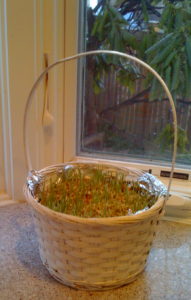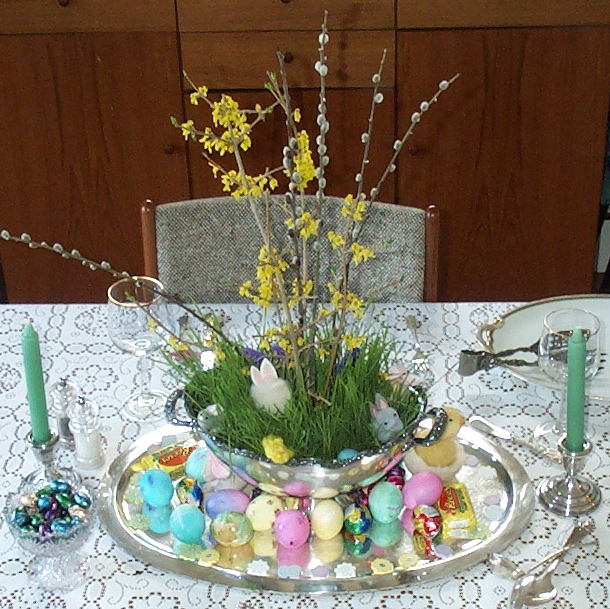Today I heard one boy’s answer—
When I left New Jersey, leaving behind my work as the Director of Community Development at the Princeton Waldorf School in 1995, I didn’t know that when I settled in my hometown in northeast Massachusetts, I would learn of a group trying to start a Waldorf school in Portsmouth, NH. No sooner did I restart my publishing company, I joined the group of five, two of whom were starting their Waldorf teacher education program through Antioch New England in Keene, NH.
As one can imagine, starting a school is arduous, and without going into details of this pioneering effort in today’s blog, the group succeeded and a few years later we opened Tidewater School across the river from Portsmouth in Eliot, Maine with a Kindergarten and Grade 1. Even with its enormous challenges, it grew and is now a Developing School of the Association of Waldorf Schools of North America (AWSNA).
 The site always had its challenges—and even with amazing transformations thanks to the parents with carpentry skills, lazuring parties and countless Open Houses—we hoped to expand our small site to a full-fledged Pre-k to Grade 8 school. We didn’t know if it would develop to its fullest at this site or somewhere else.
The site always had its challenges—and even with amazing transformations thanks to the parents with carpentry skills, lazuring parties and countless Open Houses—we hoped to expand our small site to a full-fledged Pre-k to Grade 8 school. We didn’t know if it would develop to its fullest at this site or somewhere else.
During that exciting opening day’s ceremony, I felt it a special privilege to tell the children and parents the story of the opening of the first Waldorf School.
I stayed on the Board of Directors for five years and since then, have joined the community periodically for May Faires, special events, fund raisers and other celebrations. Over the years, the school developed up to Grade 6 with small classes and then lost a few grades and had to regroup. This past year it had several Pre-K classes, Kindergarten and a Grade 1/2. The enrollment is strong for September.
Today marked the closing of Tidewater Waldorf School. In September it will open as Seacoast Waldorf School—a new name and at a new site. One other founding Board member and two founding parents were able to join me today at Tidewater’s closing ceremony.
Grade 1/2 children formed an arch with arms stretched upward while the children of the new Grade 1 class came through—all being met with applause from teachers, parents, and guests. Each child in the new Grade 1 class marched one-by-one under the arch of arms wearing a birthday gold felt crown and a gold silk piece of fabric around the shoulders. It was if their gold silks matched the exuberance and brilliance of today’s morning sunshine.
Everyone moved to a grassy area while classes recited poems, the community sang the official “Tidewater Song” and thanks were extended to the founding Board members and parents, the present faculty and the whole community. The ceremony closed with announcements about the move shortly to the new site up the road, followed by fresh strawberries and ice cream for everyone!
It was both a poignant and joyful day. As expected, many adults took photos and offered lots of congratulations as well as good-byes. I hadn’t seen one of the founders in ten years and we reflected on our experiences—exhausting and exhilarating—getting the site ready right up to midnight, just hours before the opening day so long ago.
We both were so pleased the school had purchased another site and for a reduced price during a foreclosure sale this spring. It is in excellent condition and has so many amenities our original site lacked. At the same time, we acknowledged the mixed feelings knowing that the building on Tidewater’s original site would probably be razed by a new owner.
Do you love your teacher?
During my 28+ years in Waldorf Education, I often heard that Rudolf Steiner had asked this of the children when he periodically visited the first Waldorf school. Today, as I left after the closing ceremony, I received one boy’s answer to that question.
I stopped to speak to Debra Marcotte, Grade 1/2 teacher. As I said my good-byes, I noticed a sweet young boy standing off to one side. I stopped my conversation and greeted him. He stepped forward shyly, but then took a breath, which seemed to give him confidence. Before Debra could introduce him as Seamus, he said: ” Thank you for this school. I love Tidewater and I really love my teacher!”
What a memory to cherish—





















Hometown Featured in Boston Globe
It’s not often the Boston Globe has a column about one’s hometown—these correspondents featured it the travel section—yes, it’s a gem of a 340+ year-old town.
A TANK AWAY
Hats off to the little river city of Amesbury
By Diane Bair and Pamela Wright
Globe correspondents
June 11, 2013
Located on the banks of the Merrimack River, Lowell’s Boat Shop is a National Historic Landmark.
Unless you’ve gone careening down the famously steep, snowy hills of Amesbury Sports Park, you might have missed Amesbury completely. That’s OK; this city of 16,000 on the northerly edge of Massachusetts is used to being overshadowed by its more showy neighbors, Portsmouth, N.H., and Newburyport. So you’ll feel like you’ve stumbled upon something unexpectedly cool as you dig into the blue corn-fried chicken at Crave Brasserie, or set the kids loose on the pony swings at Cider Hill Farm.
STAY
Located just off 1-95 north on exit 58B, the Fairfield Inn (35 Clarks Road, 978-388-3400, www.marriott.com/mhtfa, from $139), offers 105 bright and modern guest rooms, with pillow-top mattresses and 32-inch flat-screen TVs. Freebies include a “deluxe” continental breakfast and Wi-Fi; there’s also an outdoor pool. If you’re looking for something more intimate, check out the bed-and-breakfasts in Newburyport. The Compass Rose Inn (5½ Center St., 978-423-5914;www.compassrosenewburyport.com; summer rates from $225), located on a side street downtown, garners rave reviews. With five three-bedroom suites, this elegant Federalist-style (new, but made to look old) B&B offers niceties like Molton Brown toiletries and heated towel racks. Another Newburyport favorite: the Garrison Inn (11 Brown Square, 978-499-8500, www.garrisoninn.com, from $190; two-night minimum on weekends, June-Oct.), a 24-room boutique hotel set in a four-story Georgian-style building. Amenities include a complimentary breakfast and afternoon tea service.
EAT
Set in an old train station, Crave Brasserie & Wine Bar (32 Elm St., 978-834-6075, www.cravefoodandwine.com, $17 and up) is Amesbury’s go-to spot for a good meal. While the menu reads like a mash-up of food trends — chipotle shrimp and gnocchi, Korean BBQ, lobster mac, fried chicken and waffles — you’ll be besotted once you taste the popovers with cinnamon butter. If the blue corn-fried chicken is available when you visit, get it. Tiny Phat Cats Bistro 65A Market St., 978-388-2777,www.phatcatsbistro.com, entrees from $12) puts a fresh, local spin on comfort food. The multi-grain risotto comes with organic tofu as an optional add-in, and the New England haddock potato cake is made with local fish (plus a tasty cilantro cumin crème for dipping).
And even though the Flatbread Company (5 Market Square, 978-834-9800, www.flatbreadcompany.com, large flatbreads, $13.75-$18.75) is part of a small chain, this was the original location. Skip dessert and dig into the sea salt dark chocolate caramels at Ovedia Artisan Chocolates (36 Main St., 978-388-7700, www.ovedia.com). Owner Barbara Vogel’s charming shop is the place to go for two of the four basic food groups: handmade chocolates and espresso.
Riverwalk
DURING THE DAY
On a beautiful day, meander the Riverwalk, a 1.3-mile multi-use path that skirts the Powwow along the old Boston & Maine rail bed. Amesbury’s signature attraction is Lowell’s Boat Shop (459 Main St., 978-834-0050, www.lowellsboatshop.com). Explore centuries of wooden boat-building history at this National Historic Landmark, located on the banks of the Merrimack. It’s a working boat shop (since 1793) and a living museum, with guided tours and exhibits.
Whittier Historic House Museum
The city is also home to a couple of small museums, the Whittier Home Association (86 Friend St., 978-388-1337, www.amesburytreasures.org, $7), former home of Quaker poet and abolitionist John Greenleaf Whittier, and the Bartlett Museum (270 Main St., 978-388-4528, www.bartlettmuseum.org), a two-room museum that houses the city’s artifacts from centuries past. And if you love Amesbury Sports Park (12 South Hunt Road, 978-388-5788, www.amesburysportspark.net, two hours of summer tubing $14, Zorb ride $20) in wintertime, you’ll be happy to know it’s open for summer tubing and Zorb rides. Since you’re not traveling far, you can take advantage of Amesbury’s best stop for a souvenir, Cider Hill Farm (45 Fern Ave., 978-388-5525, www.ciderhill.com). You can pick your own blueberries, strawberries, raspberries, apples, and peaches at this 145-acre farm, or buy them by the pound, along with goodies like apple cider doughnuts. (Check the website for harvest information.) And if you have kids, check out the pony swings, made from old tires.
AFTER DARK
Nothing says retro fun like candlepin bowling. Local favorite Leo’s Super Bowl (84 Haverhill Road, 978-388-2010, www.leossuperbowl.com) goes cosmic on Friday nights (from 9-11), when black lights, strobes, disco balls, and dance music amp up the atmosphere. On Saturdays from 7-11 p.m., they switch on the blue lights and queue up the oldies tunes for “Moonlight Oldies” night. Get your game on at the Riverside Lounge (37 Main St., 978-834-0020, www.riversideloungebar.com) where 18 TV screens and 17 draft beers make it a party. Just down the street, there’s the Ale House (33 Main St., 978-399-1950, www.amesburyalehouse.com), where they’ve got 24 brews on tap. And we’d lose all street cred if we didn’t mention Hodgie’s Ice Cream (71 Haverhill Road, 978-388-1211, www.hodgies.com), open till 9 p.m. This throwback ice cream stand draws crowds for massive, made-on-site ice cream — and even the small servings are enormous.
Amesbury is 52 miles north of Boston. For information, visit www.amesburychamber.com.
Diane Bair and Pamela Wright can be reached at bairwright@gmail.com.
Downtown Amesbury
_______